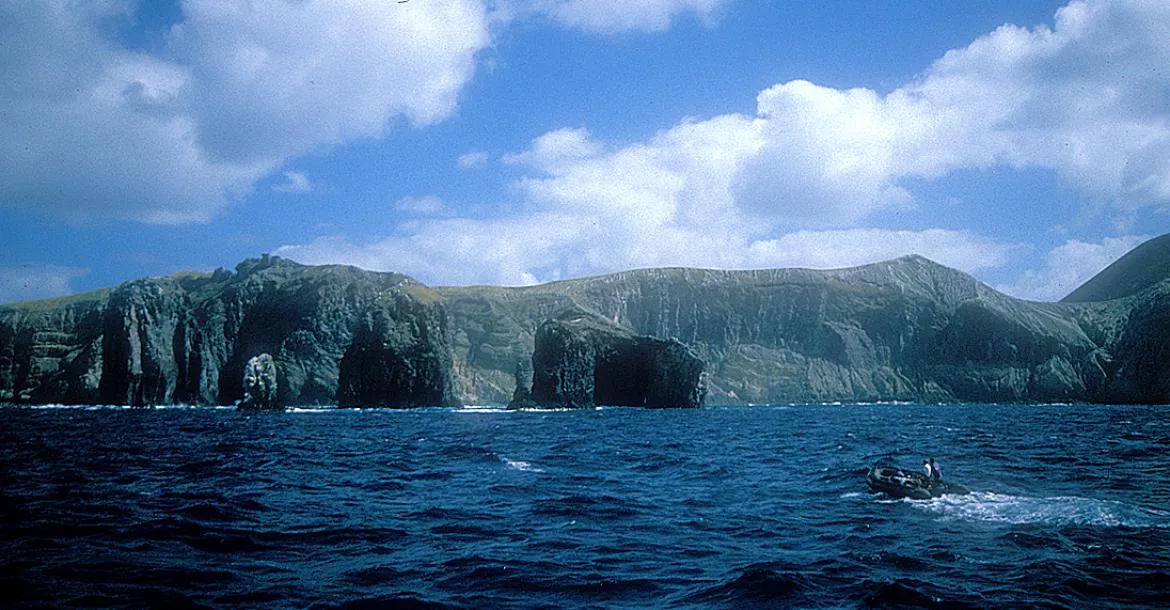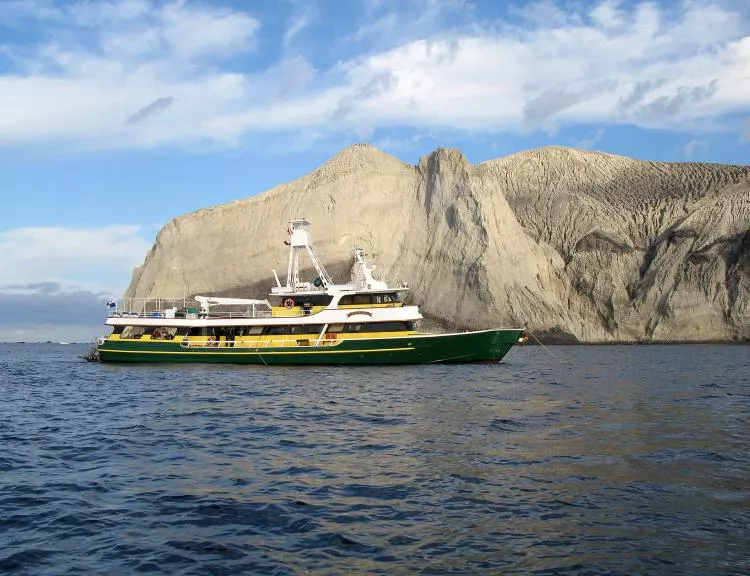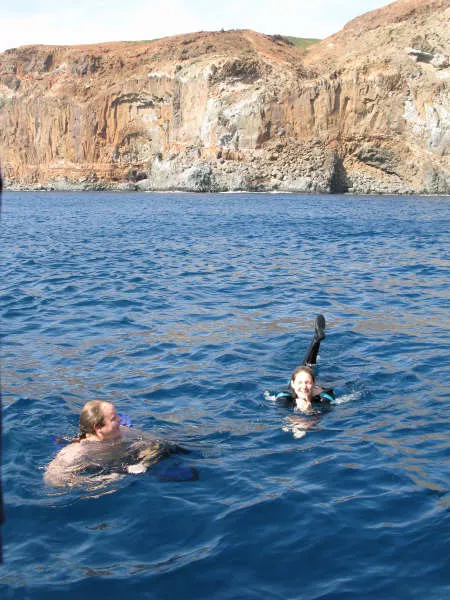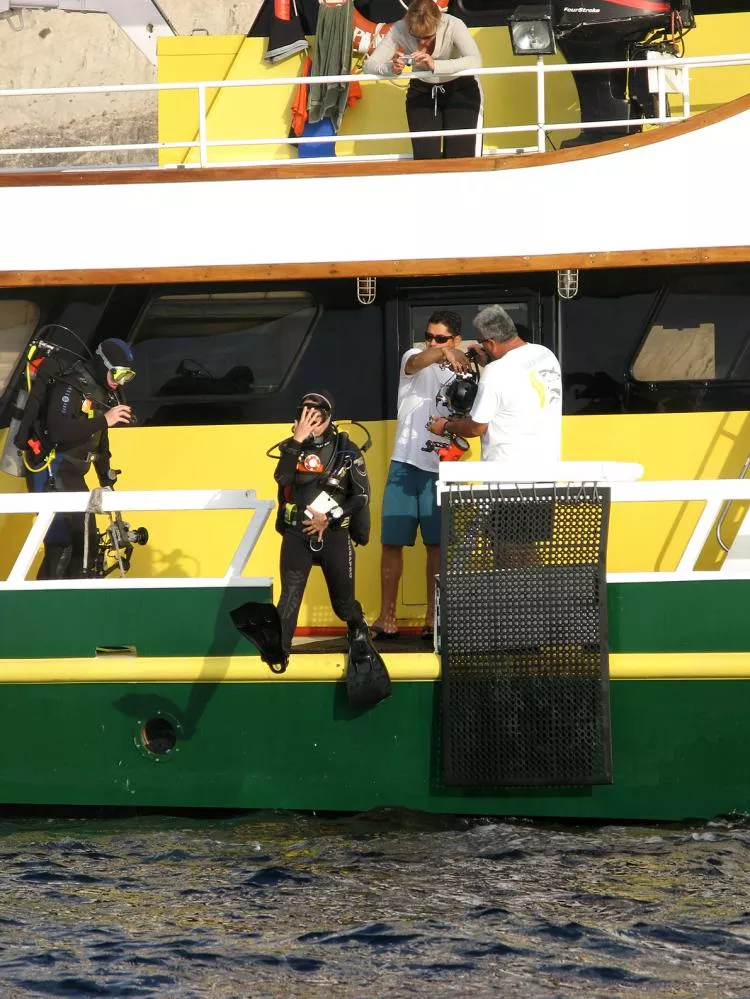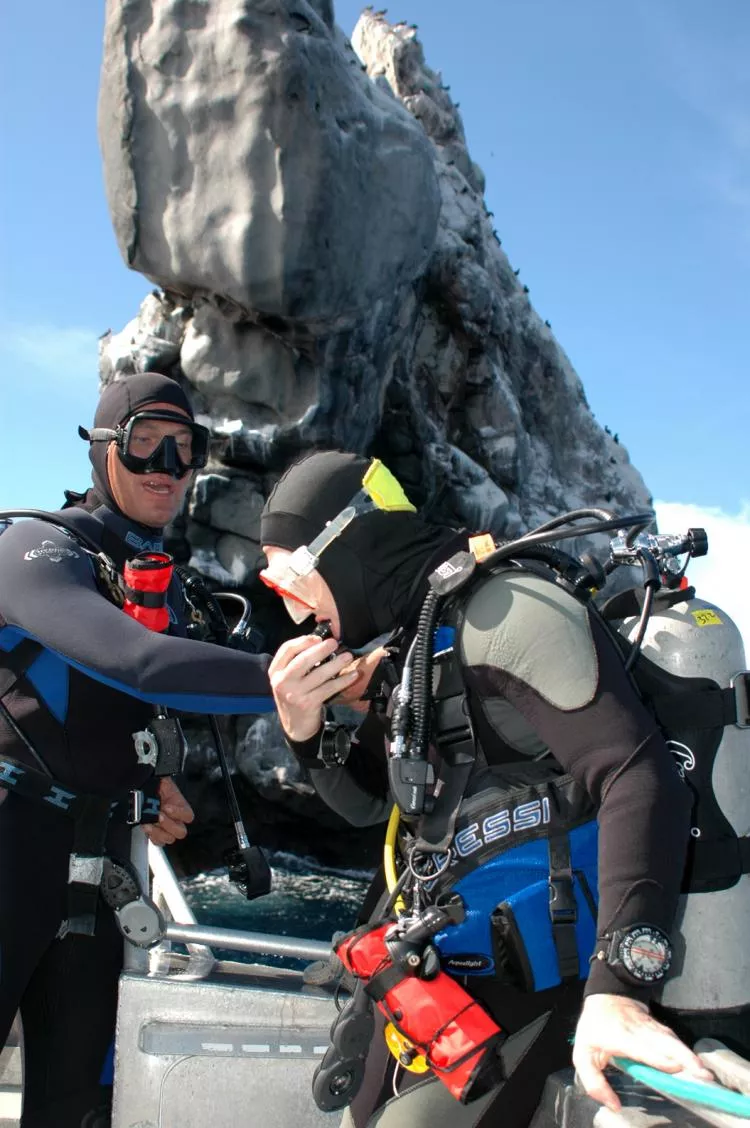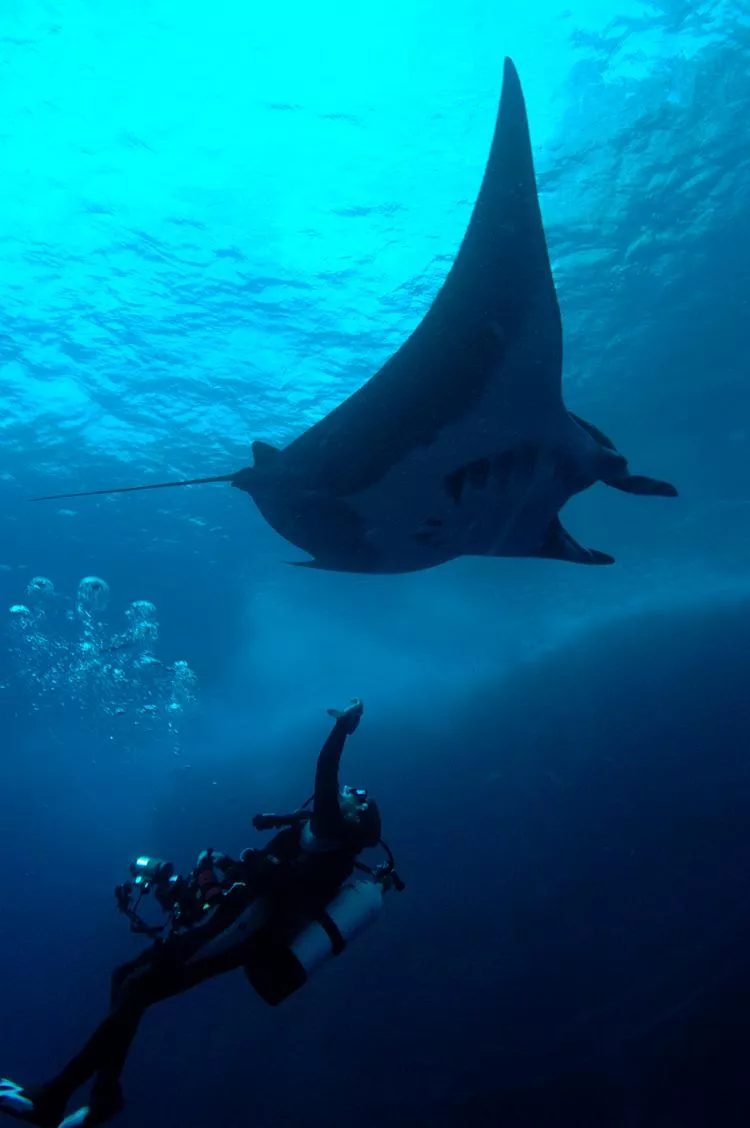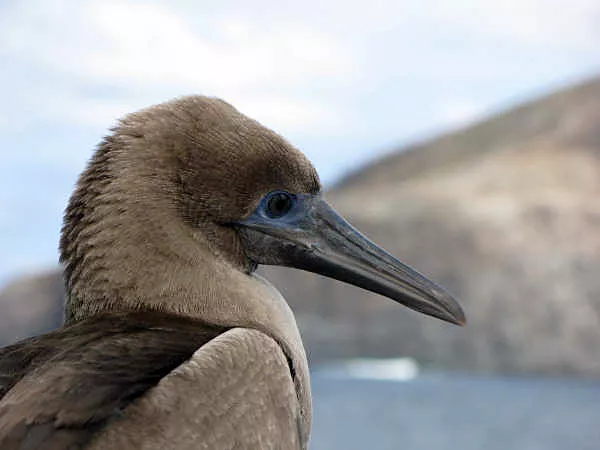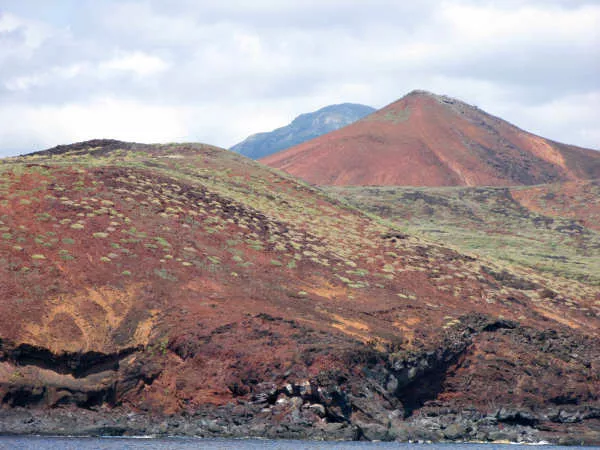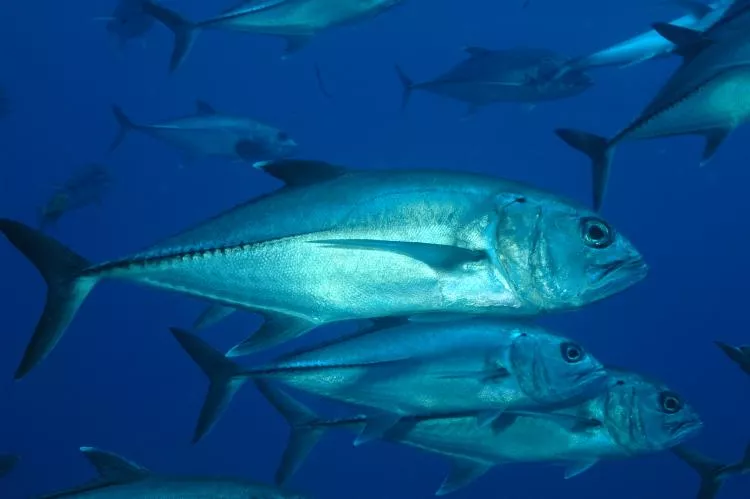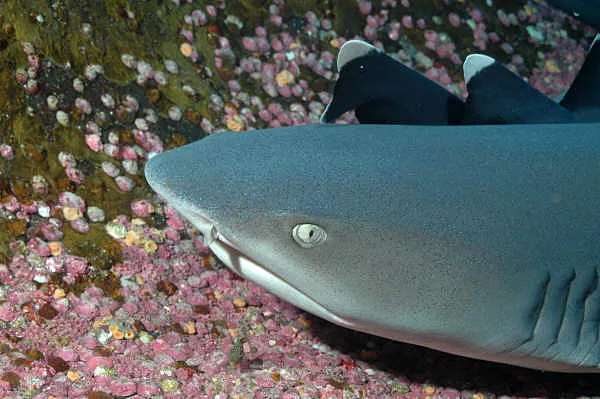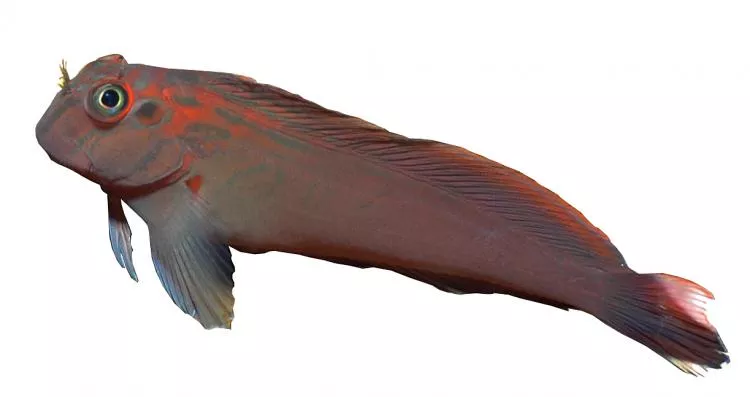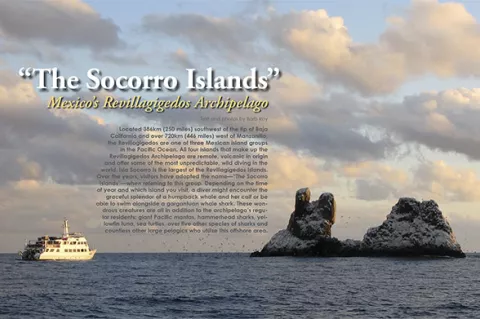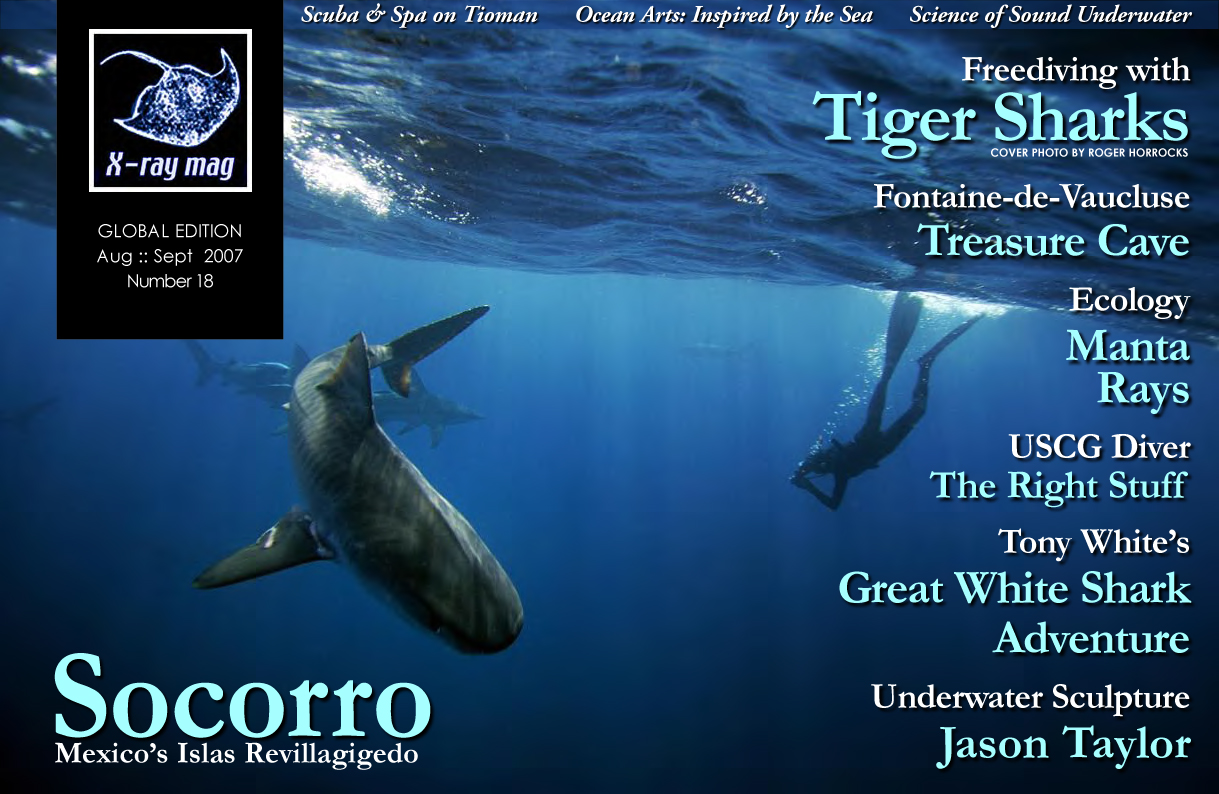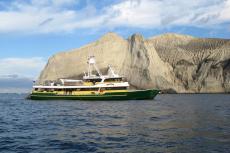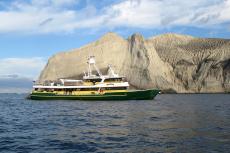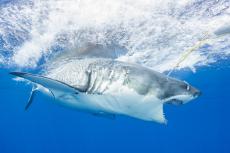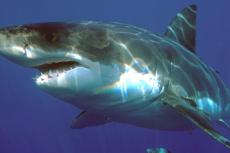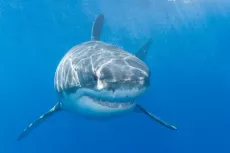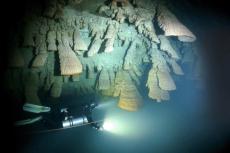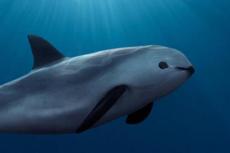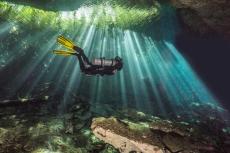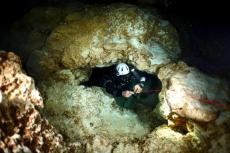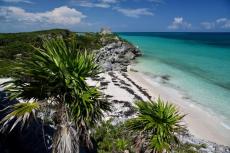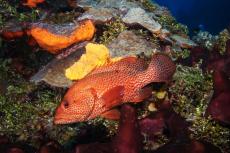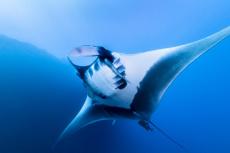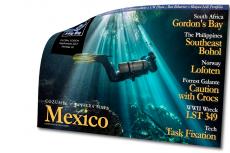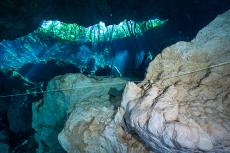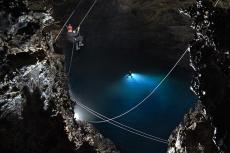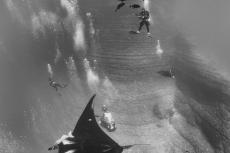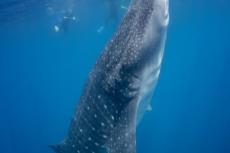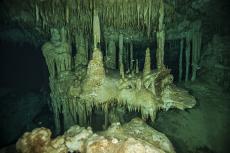Located 386km (250 miles) southwest of the tip of Baja California and over 720km (446 miles) west of Manzanillo, the Revillagigedos are one of three Mexican island groups in the Pacific Ocean. All four islands that make up the Revillagigedos Archipelago are remote, volcanic in origin and offer some of the most unpredictable, wild diving in the world.
Contributed by
Topside, the islands are completely different in appearance and are home to many endemic plant and animal species. Overall, the area is recognized as a distinct terrestrial eco-region, which is part of the Neotropic ecozone (tropical and subtropical dry broadleaf forests). Below the azure blue coloured water, ancient volcanic activity has created a rugged terrain of reefs, overhangs, walls and unusual topography.
Diving at the Revillagigedos is done from November through early May when the water is generally calm and visibility can reach an impressive 30 meters (100 feet) plus! Cooler water temperatures of 23 degrees Celsius (75 Fahrenheit) seem to attract Humpbacks in February and March, while November, December and late April-May appear to be good for whale sharks. Pods of bottlenose dolphins are commonly seen from January through March. Mantas, sharks, turtles and schools of Jacks can be enjoyed almost anytime.
At one point, the region’s natural marine resources were drastically depleted and some species completely wiped out, due to an over abundance of unregulated commercial fishing. Realizing the necessity for supervision and protection, the Mexican government established the Revillagigedos as a Protected Biosphere in 1994. No fishing of any kind is allowed within a 12 mile radius of each island. Although dive charter boats who frequent these islands have reported a steady increase in resident marine life populations, remoteness still hinders proper policing and monitoring efforts.
Today, the Revillagigedos welcomes adventurous divers from around the world for spectacular underwater photography opportunities and those who love to swim with big marine pelagics! Currently, there are two liveaboard dive charter operators who offer scheduled 8-11 night excursions—the Solmar V and the Nautilus Explorer. Both vessels are luxurious in every way, offering three gourmet meals per day, comfortable accommodations, 3-4 dives per day and a knowledgeable, professional crew. With the capability of making fresh water, their outdoor on-deck showers, rinse tanks and stateroom showers are unlikely to ever run out. Both operations depart from Cabo San Lucas, taking approximately 24 hours to make the initial crossing to San Benedicto, the first island in a triangular journey. Only three of the four islands are visited, with the fourth, Clarion, being an additional 314km (195 miles) west of Socorro. The larger “mothership” is usually anchored in a protected area, with most of the diving taking place from two smaller boats, holding 8-10 divers each. Traveling from one island to the next is usually done at night.
Both operations supply aluminum 80 cu ft tanks which can accommodate DIN or yoke-style regulators. Nitrox is available to use for the entire trip as an option for an additional fee. Weights are also provided.
Isla San Benedicto
Isla San Benedicto is the third largest of the island group with two prominent peaks (Barcena and Herrera) and one very wide volcanic crater. The last recorded eruption was in 1952 leaving behind massive vertical ridges created by volcanic ash. As they solidified over the years, San Benedicto has taken on a gray-coloured glacial look. Very little life grows upon these ridges however, leaving scant quantities of green vegetation to be found on the northern half of the island. Both dive boats like to anchor on the more protected “ash” side of this island, using the smaller boats for quick access to trickier sites requiring maneuverability.
Stretching outward to the sea are the jagged remains of a lava flow—its violent epic forever frozen in time. Brown-footed boobies are one of the several sea birds utilizing the cliffs. From high above, they peer down with goofy expressions when the smaller boats motor over for closer looks. These noisy birds have even been known to land on visiting boats and be coaxed onto a human arm or head!
Underwater the lava flow continues to stretch out even more, offering a deep platform for divers to sit and wait for passing sharks and other large pelagics. Closer to shore, divers will find a multitude of colourful fish and hard corals on a stair-stepping terrain.
During a recent visit in January and February of 2007, I was able to dive this location at a place called the “Canyon”. Like all of the other divers who jumped into the water for their first dive of the trip, I eagerly followed the dive guide over to a fingering reef and headed out towards open ocean.
As the depth increased, the water grew cooler. Sounds from the reef below and passing fish became more evident. At 27 meters (90 feet), I could clearly see the other divers and everything another 9 meters (30 feet) below me. Expecting to see hammerhead, silky and Galapagos sharks, I came equipped with a wide angle lens for my digital underwater camera system. For a while we all sat like spectators, patiently waiting for something to pass by. The blue abyss was the only thing I could see.
A large school of yellow fish with blue stripes formed a tight circle and hovered near the reef to one side of us. Thinking nothing of this I turned to see what I could find on the reef behind us. Several others also became curious and began exploring the reef.
Several small Socorro lobsters under a rocky ledge peered out, but did not seem afraid. To the left of the lobsters, a small brown and black mottled octopus stood stretched up on its legs, as if trying to see what it was the divers were watching for. Behind these smaller critters I noticed several big silver-tip sharks and a huge manta! Realizing my wide angle lens was of little use for this octopus, I scurried off to join my companions who had already abandoned their posts. Within seconds, I was in the middle of the encounter photographing these sleek swimming machines.
About this time, the other divers, who stayed loyal to their watch, were rewarded by a large school of hammerheads in the distance! What an awesome experience it was, especially if this was one’s first visit to the Revillagigedos.
On another dive to this same site, once again with my wide angle lens on, we saw more schooling hammerheads, but too far to photograph. A tiger shark however, came a bit too close, causing everyone to “hug” the reef, including the fish! Once the excitement was over, we swam with mantas and more sharks on our way back in.
Once the novelty of the big animals at the site wore off, I put my 50mm lens on and stayed in the 18 meter (60 foot) range photographing an array of smaller critters.
During the evening, when we all relaxed and showed our day’s work, I was accused of teleporting to another reef! My fellow dive companions had no idea octopus, sea stars, sea cucumbers, sponge and smaller fish could be found on the reef. My presentation was also full of turtles, green morays, yellow guineafowl puffers, and aggressive pairs of damselfish.
Another site commonly visited, and well worth the wait if weather is uncooperative, is a place called “The Boiler”. Coming within meters of the surface, a block-shaped pinnacle causes surface water to boil in turmoil when conditions are rough. Similar actions beneath the surface occur, requiring caution to be heeded when swimming close to the rock. This harsh surge movement will also create a challenge for photographers attempting close-up shots.
In conditions like this, it is recommend that divers simply move away from the structure and redirect their focus to the mantas. For some unknown reason, this is one of the “hot-spots” where manta sightings are almost guaranteed! Huge mantabirostris, the largest of all the rays, seem to be attracted to the divers. With grace and poise they appear to fly through the water from one diver to the next, curiously looking each small bubble-blowing creature over carefully.
Mantas
Mantas can grow to a weight of 2000kg (4,400lbs) and have a wingspan of over 6.7 meters (22 feet). They are believed to give birth to just one pup, every 2-3 years. A manta’s diet usually consists of small schooling fish and zooplankton. Their cephalic fins on each side of their mouth are rolled up when not guiding water and food into their mouth, giving them a “horned” appearance.
These pelagic giants are normally found all over the world in warm water near oceanic islands and submarine ridges with nutrient rich upwellings. Both charter operators have adopted a no touch and no ....

